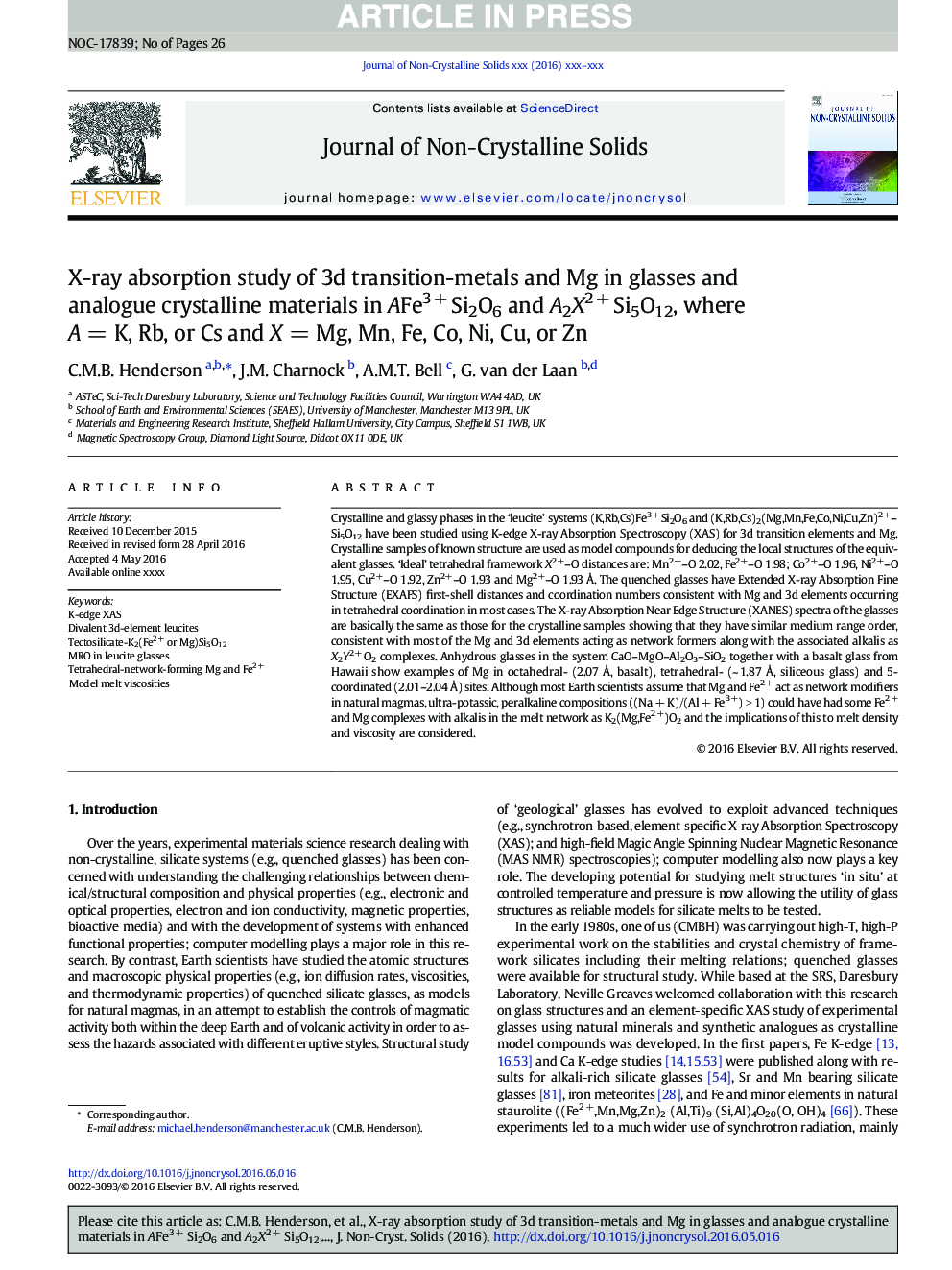| Article ID | Journal | Published Year | Pages | File Type |
|---|---|---|---|---|
| 5441459 | Journal of Non-Crystalline Solids | 2016 | 26 Pages |
Abstract
Crystalline and glassy phases in the 'leucite' systems (K,Rb,Cs)Fe3Â +Â Si2O6 and (K,Rb,Cs)2(Mg,Mn,Fe,Co,Ni,Cu,Zn)2Â +-Â Si5O12 have been studied using K-edge X-ray Absorption Spectroscopy (XAS) for 3d transition elements and Mg. Crystalline samples of known structure are used as model compounds for deducing the local structures of the equivalent glasses. 'Ideal' tetrahedral framework X2Â +-O distances are: Mn2+-O 2.02, Fe2+-O 1.98; Co2+-O 1.96, Ni2+-O 1.95, Cu2+-O 1.92, Zn2+-O 1.93 and Mg2+-O 1.93Â Ã
. The quenched glasses have Extended X-ray Absorption Fine Structure (EXAFS) first-shell distances and coordination numbers consistent with Mg and 3d elements occurring in tetrahedral coordination in most cases. The X-ray Absorption Near Edge Structure (XANES) spectra of the glasses are basically the same as those for the crystalline samples showing that they have similar medium range order, consistent with most of the Mg and 3d elements acting as network formers along with the associated alkalis as X2Y2Â +Â O2 complexes. Anhydrous glasses in the system CaO-MgO-Al2O3-SiO2 together with a basalt glass from Hawaii show examples of Mg in octahedral- (2.07Â Ã
, basalt), tetrahedral- (~Â 1.87Â Ã
, siliceous glass) and 5-coordinated (2.01-2.04Â Ã
) sites. Although most Earth scientists assume that Mg and Fe2 + act as network modifiers in natural magmas, ultra-potassic, peralkaline compositions ((Na + K)/(Al + Fe3 +) > 1) could have had some Fe2 + and Mg complexes with alkalis in the melt network as K2(Mg,Fe2 +)O2 and the implications of this to melt density and viscosity are considered.
Related Topics
Physical Sciences and Engineering
Materials Science
Ceramics and Composites
Authors
C.M.B. Henderson, J.M. Charnock, A.M.T. Bell, G. van der Laan,
